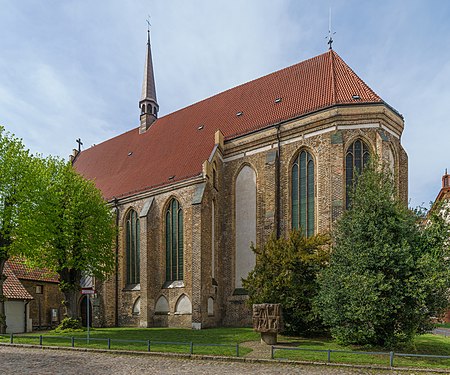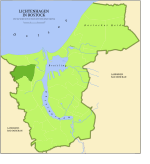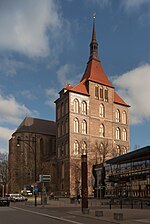Abbey of the Holy Cross, Rostock
1270 establishments in Europe1270s establishments in the Holy Roman Empire13th-century churches in GermanyBrick GothicChristian monasteries established in the 13th century ... and 10 more
Cistercian nunneries in GermanyConvents in GermanyLutheran churches converted from Roman CatholicismLutheran churches in RostockLutheran women's conventsMonasteries in Mecklenburg-Western PomeraniaMuseums in Mecklenburg-Western PomeraniaReligious organizations disestablished in 1920Religious organizations established in the 1270sTourist attractions in Rostock

The Abbey of the Holy Cross (German: Kloster zum Heiligen Kreuz) in Rostock, Germany, was founded in the 13th century by Cistercian nuns. It is the only fully preserved abbey in the city. The complex includes the former abbey church which is used today as the University Church (Universitätskirche). The remaining former convent buildings house the Museum of Cultural History (Kulturhistorische Museum) for the city of Rostock.
Excerpt from the Wikipedia article Abbey of the Holy Cross, Rostock (License: CC BY-SA 3.0, Authors, Images).Abbey of the Holy Cross, Rostock
Klosterhof, Rostock Stadtmitte (Ortsbeirat 14 : Stadtmitte)
Geographical coordinates (GPS) Address Nearby Places Show on map
Geographical coordinates (GPS)
| Latitude | Longitude |
|---|---|
| N 54.087222222222 ° | E 12.1325 ° |
Address
Kloster zum Heiligen Kreuz
Klosterhof 7
18055 Rostock, Stadtmitte (Ortsbeirat 14 : Stadtmitte)
Mecklenburg-Vorpommern, Germany
Open on Google Maps











